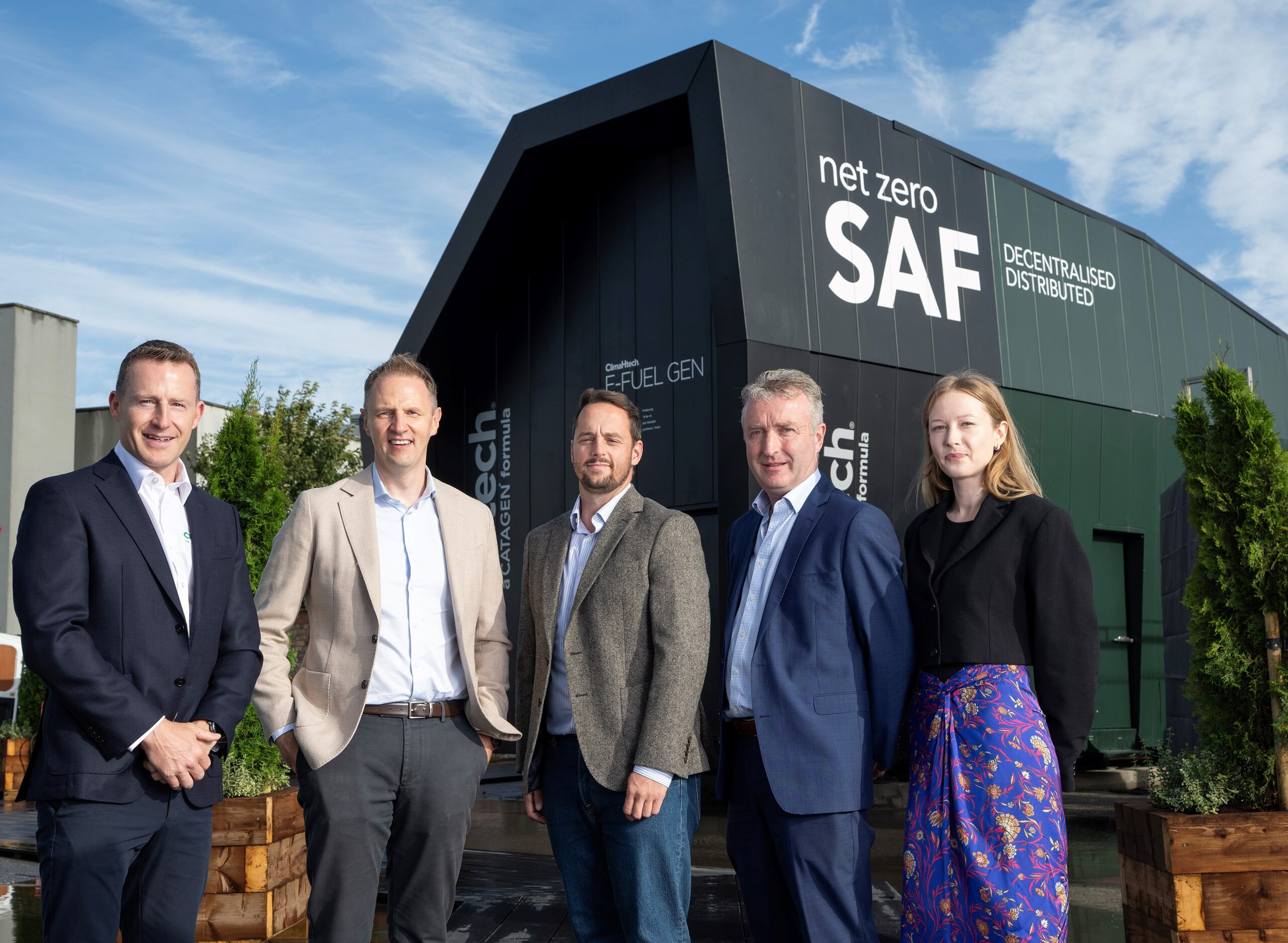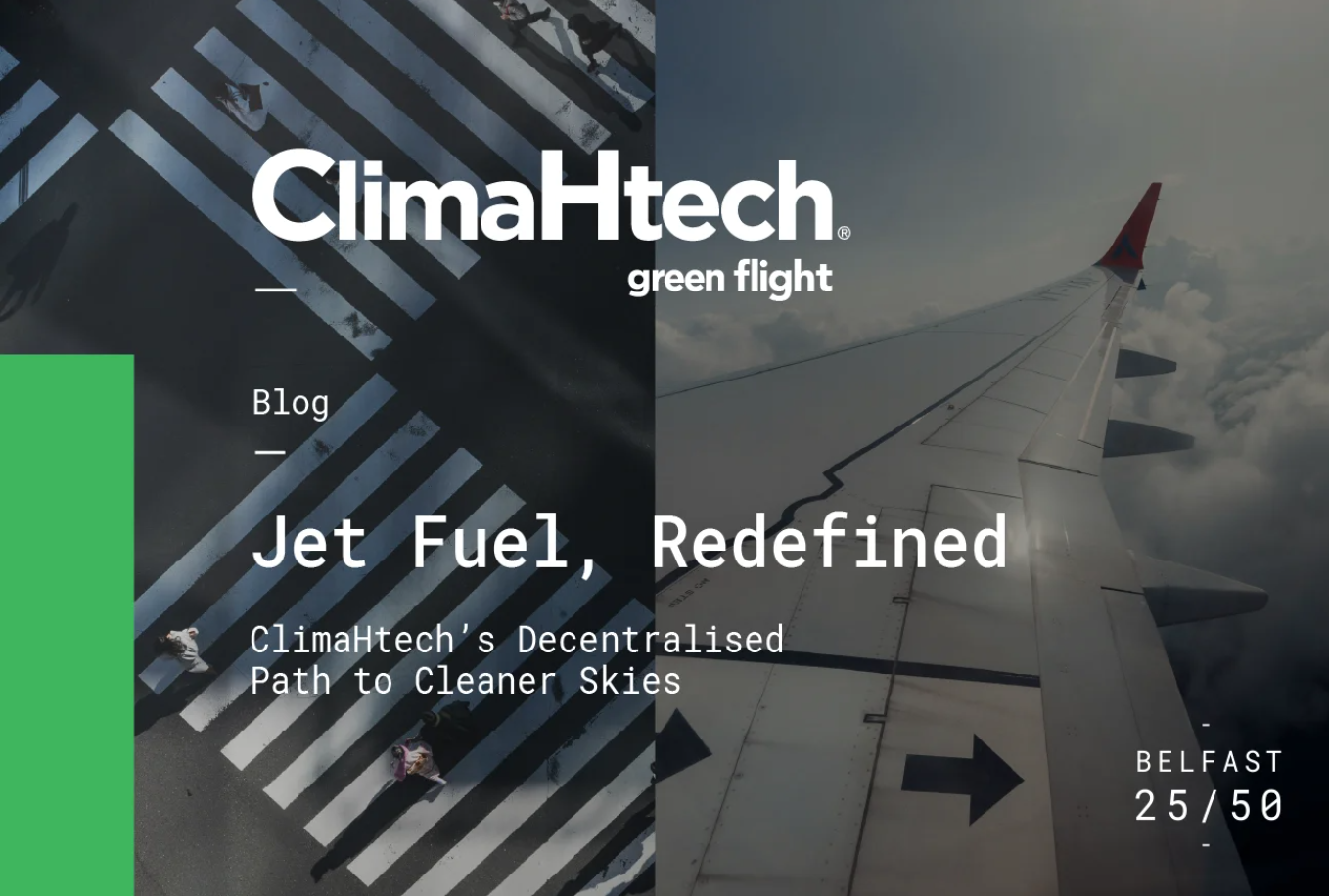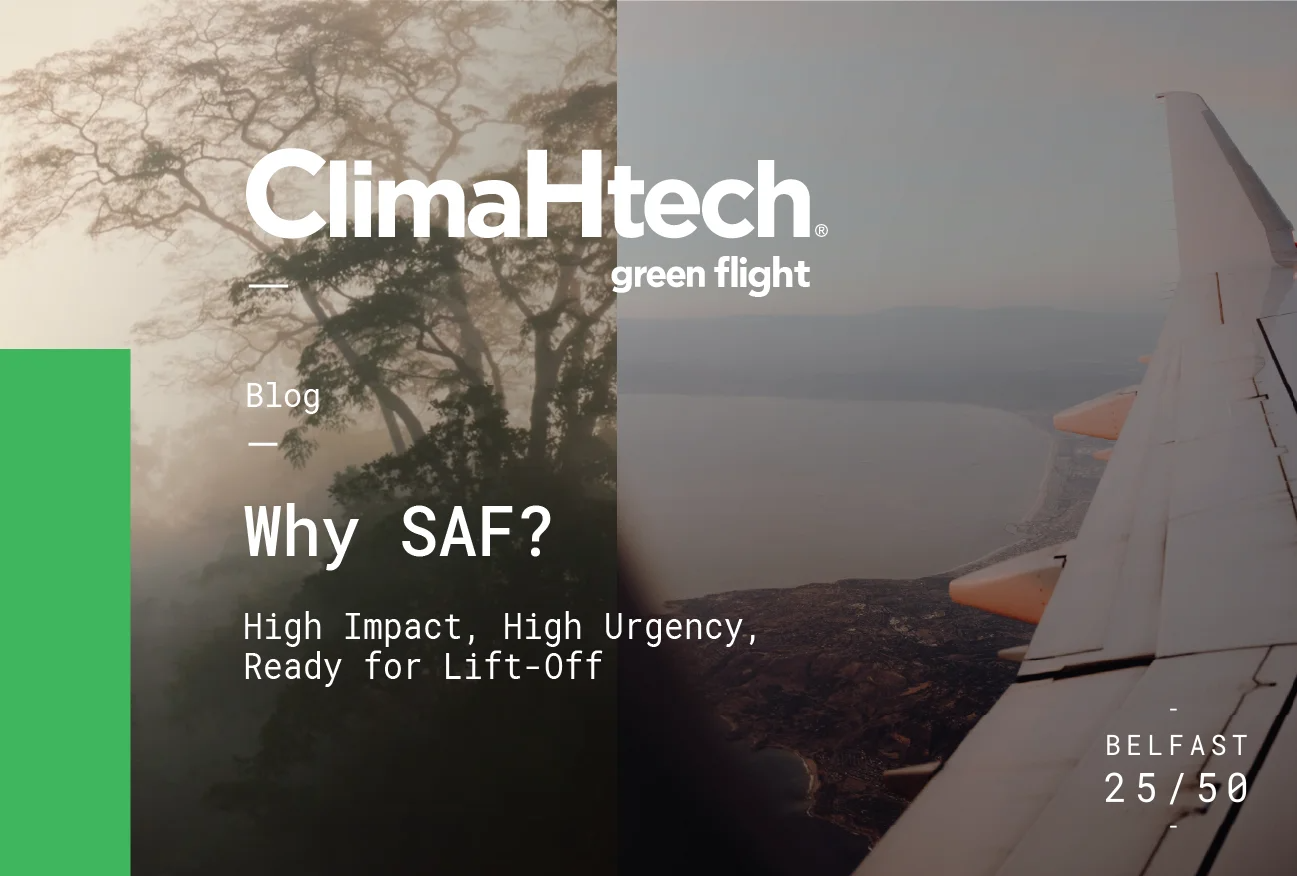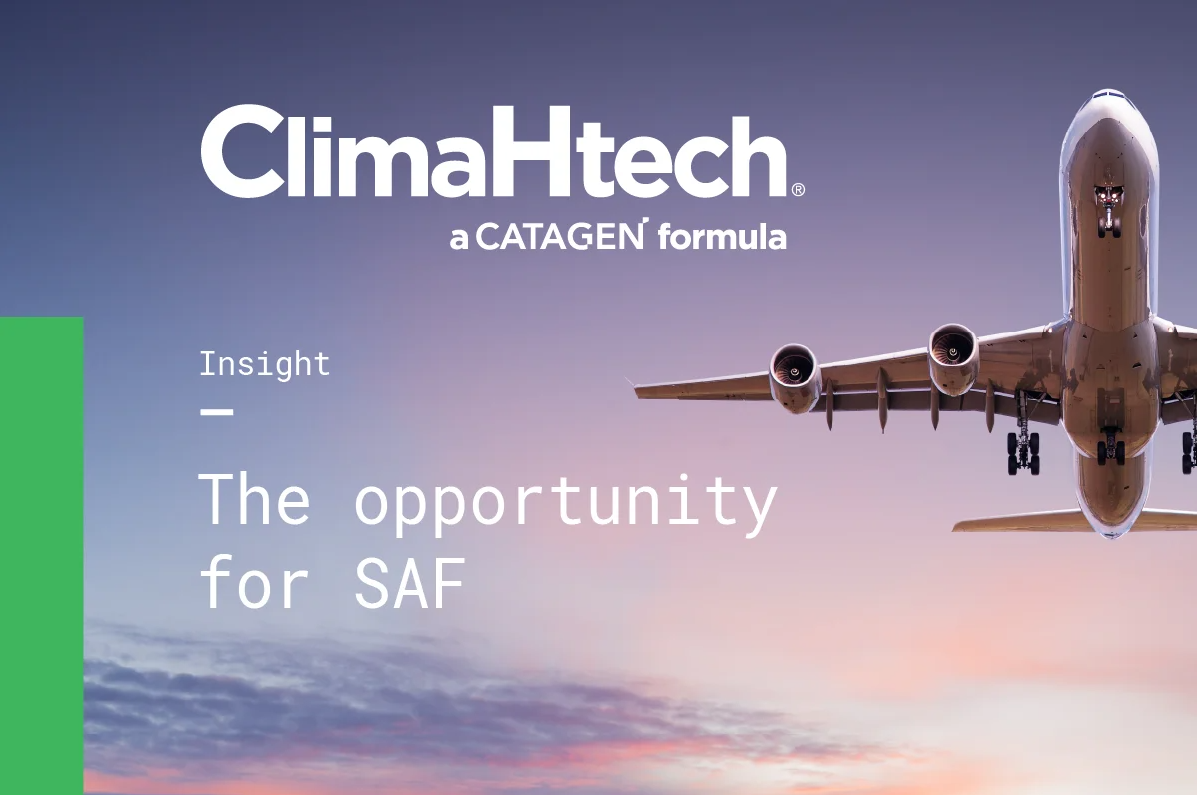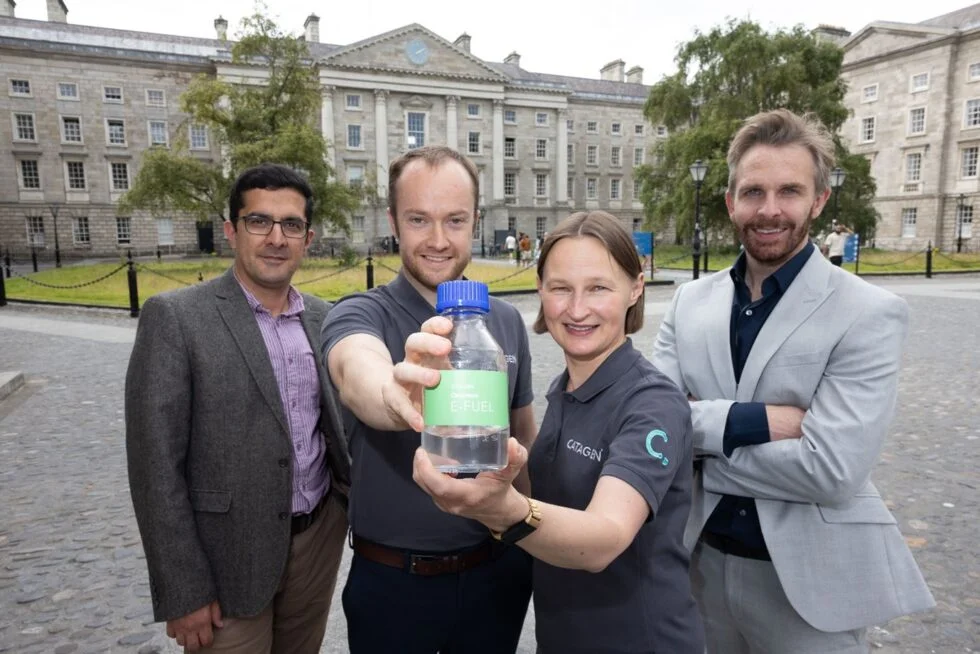to clean and decarbonise the air
ClimaHtech Green Flight offers SAF production (e-SAF and Bio-SAF) via renewable electricity and sustainable biomass in a modular, decentralised, and scalable system.
ABOUT GREEN FLIGHT
ClimaHtech Green Flight is CATAGEN’s answer to aviation’s toughest climate challenge—developing scalable, decentralised systems to produce Sustainable Aviation Fuel (SAF) from renewable electricity and sustainable biomass.
Powered by our E-FUEL GEN and BIOHGEN technologies, Green Flight delivers both e-SAF and bio-SAF, enabling net zero fuel production closer to where it’s needed—at scale, and with ultra low CO₂ emissions.
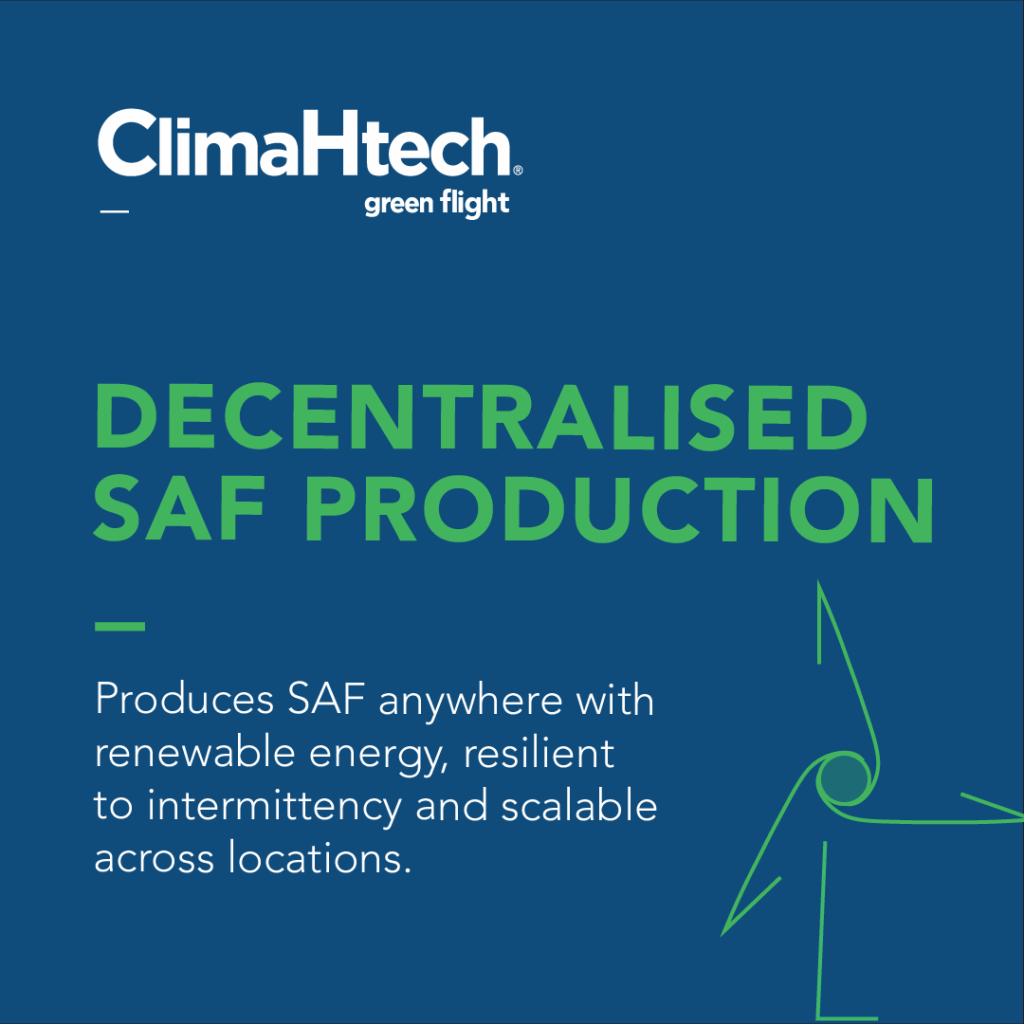

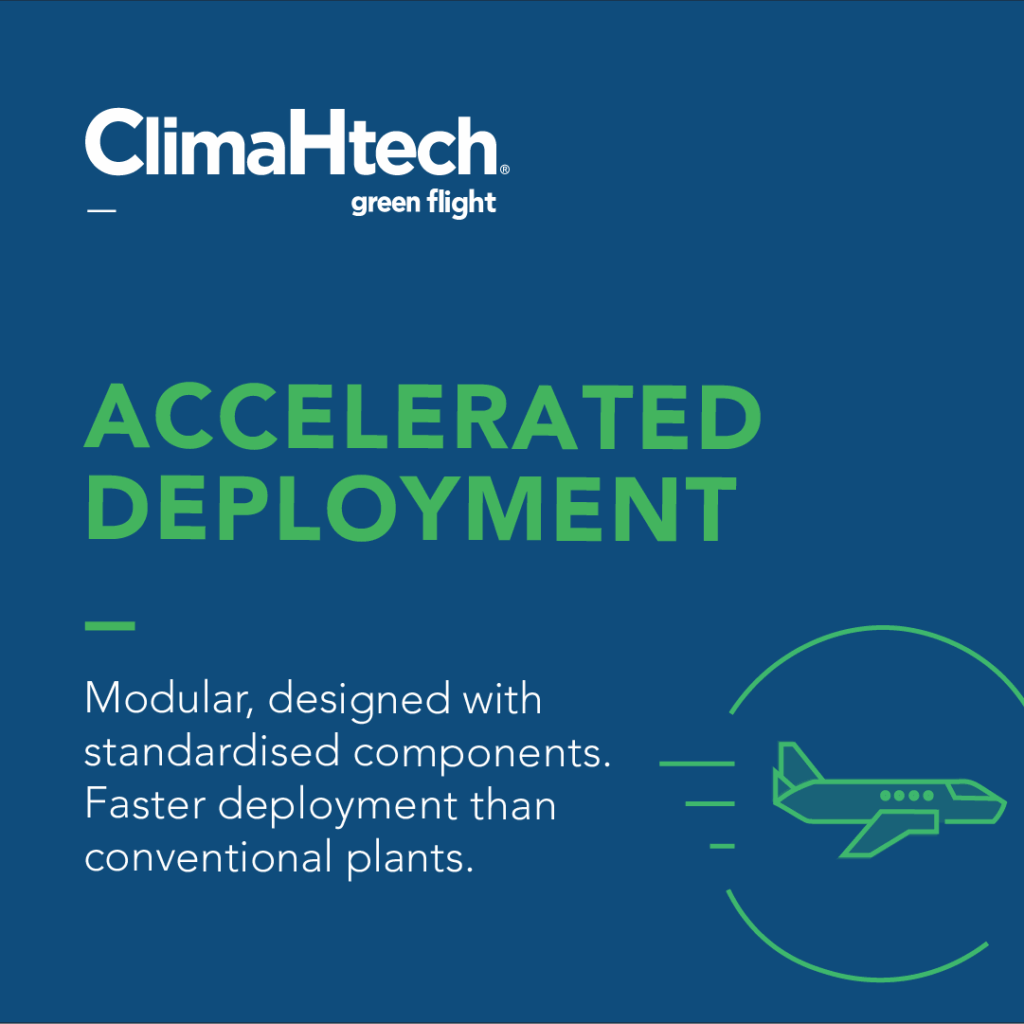

THE RUNWAY TO NET ZERO STARTS HERE
As the climate crisis accelerates, the pressure is rising for aviation to decarbonise. Passenger demand is projected to reach 16 billion by 2050, and global aviation emissions could grow by 300%—making this one of the most challenging sectors to bring to net zero.
The world will need an estimated 360 million tonnes of Sustainable Aviation Fuel (SAF) by 2050 to close this gap. In 2024, just 1 million tonnes were produced annually.
LAUNCHED IN BELFAST

With only 25 years remaining to secure the future of aviation, the sector must act now to get on a sustainable flight path.
CATAGEN’s BELFAST 25/50 event in September marked the launch of ClimaHtech Green Flight, unveiling the modular, electrically driven system capable of producing both e-SAF and bio-SAF. Designed for impact, built for scale.
Partnership announcement
Marking the launch of ClimaHtech Green Flight (CGF), CATAGEN announced new strategic partnerships with Ryanair and Shell Aviation Ireland Limited (MJV) for offtake agreements of sustainable aviation fuel (SAF) production and use.
The partnerships were unveiled at the ClimaHtech Technology Campus launch event, where CATAGEN showcased its patented BIOHGEN and E-FUEL GEN reactor technologies for producing sustainable aviation fuel (SAF) through two pathways: BioSAF (Power-and-Biomass-to-Liquid) and eSAF (Power-to-Liquid).
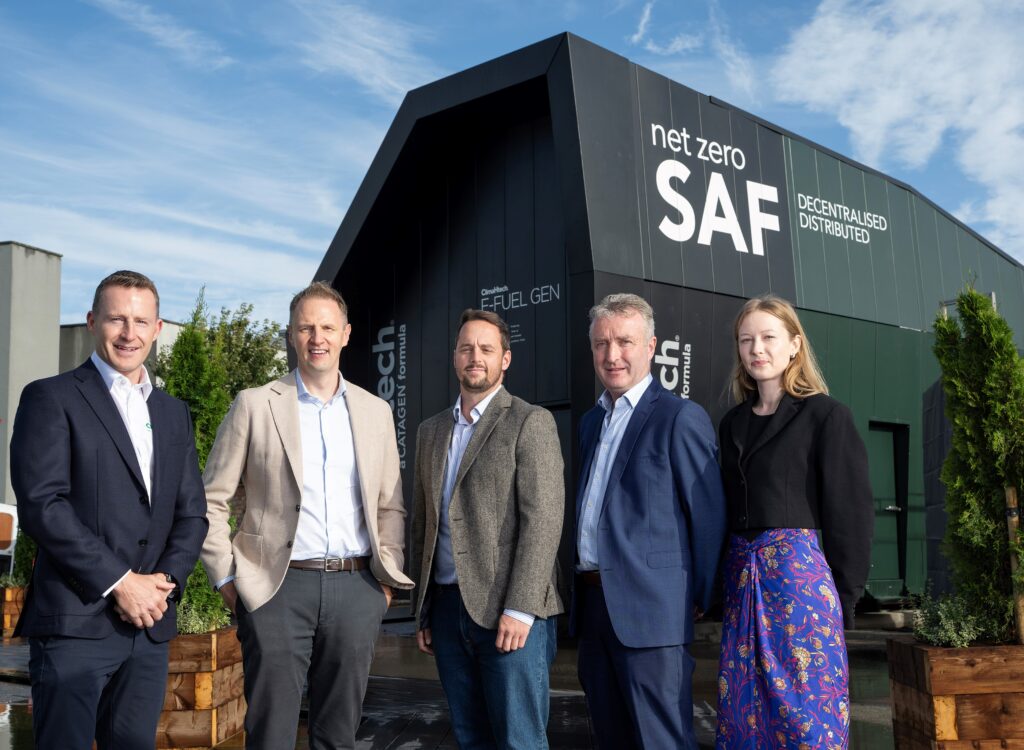
SAF Redefined
We’re bringing together those who share a vision for aviation beyond fossil fuels.
Sign up for updates on our latest projects, insights and content as we advance the production of Sustainable Aviation Fuel (SAF).
FAQs
What is Sustainable Aviation Fuel (SAF)?
SAF is a cleaner, alternative aviation fuel made from renewable sources such as biomass, waste, and renewable electricity. It is designed to replace conventional jet fuel without requiring changes to aircraft engines or infrastructure.
How does ClimaHtech Green Flight produce SAF?
ClimaHtech Green Flight's system creates drop-in SAF using a modular and decentralised process powered by renewable electricity and biomass. This approach is designed to be scalable and locally deployable. ClimaHtech Green Flight’s electrically driven E-FUEL GEN technology can produce SAF from wind, water and air (e-SAF) and from wind and sustainable biomass when combined with CATAGEN’s BIOHGEN technology (bio-SAF).
Is SAF compatible with existing aircraft?
Yes. Drop-in SAF is engineered to meet current jet fuel standards, making it fully compatible with today’s aircraft and fuelling infrastructure without modification.
What makes ClimaHtech Green Flight’s SAF technology different?
CATAGEN's Green Flight solution is modular, decentralised, and aimed at one of the most challenging sectors to decarbonise: aviation. Their innovation supports local production and energy resilience while reducing lifecycle emissions.
What are the environmental benefits of SAF?
SAF reduces greenhouse gas emissions from aircraft, with the specific reduction depending on the feedstock and production method.
Are there government regulations supporting SAF?
Yes. Both the EU and UK have set legally binding SAF blending mandates starting in 2025. The EU will require 2% SAF by 2025, rising to 6% by 2030 and 70% by 2050—with a growing share from synthetic fuels. The UK mandate sets a 2% SAF target by 2025, 10% by 2030, and 22% by 2040, while capping Hydroprocessed Esters and Fatty Acids (HEFA) use and introducing minimums for e-fuels. These policies create strong demand signals and financial incentives for scalable solutions like ClimaHtech Green Flight.
LATEST NEWS




